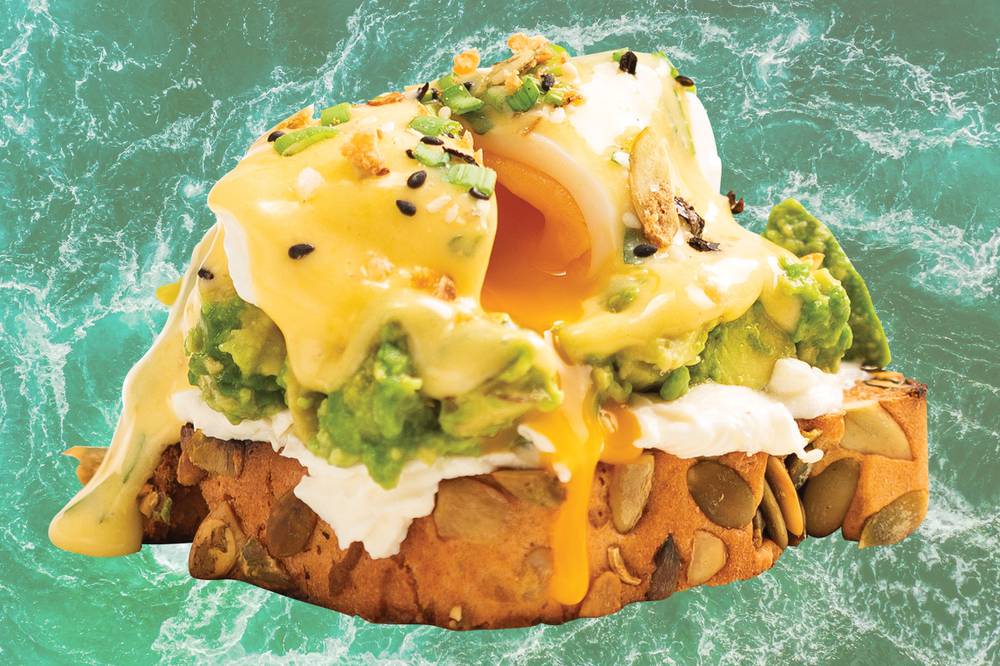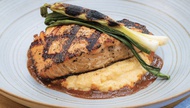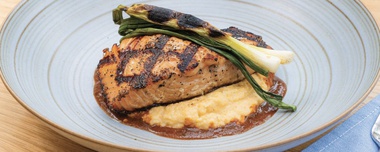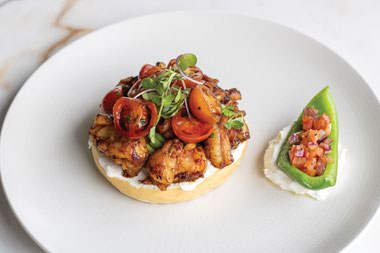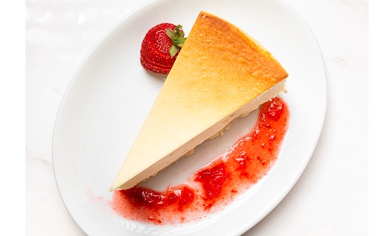You’ve been cooking at home for a few weeks now and hopefully gaining more confidence in creating dishes that fall outside your normal repertoire. Now it’s time to add some fancy to your meals by learning the five “mother sauces.”
Officially classified in the early 1800s by French chef Marie-Antoine Carême—one of the first internationally renowned celebrity chefs—the mother sauces are considered to be the foundation for almost every other sauce that has come since. Mastering them is an essential kitchen skill.
With just three techniques—making a roux, which is basically cooking flour in fat to make a paste used as a thickener; emulsification, where you use a binder (like an egg yolk) to bring together water and oil; and reduction, or cooking down liquid until it’s thickened—you’ll be whipping up tasty sauces in no time, and taking your cooking to the next level.
1. Béchamel
This white sauce is the easiest to make and the most versatile of the sauces. It’s basically just a white roux with milk or cream added to it. Used as is or as a foundation for other sauces, it lends dishes a creamy richness that’s indulgent and comforting at the same time.
Take it up a notch: Add Gruyère or Parmesan to make Mornay sauce; add mustard to make mustard sauce; add cheddar cheese, mustard powder and Worcestershire sauce to make a cheese sauce.
Use it to make: Kicked-up mac and cheese, lasagna, casseroles, croque madame.
2. Velouté
Velouté, like béchamel, starts out with a white roux but turns more blond depending what you add to it—either veal, chicken, fish or vegetable stock. Unlike béchamel, it’s not a finished sauce but a base for others, including gravies and mushroom sauces.
Take it up a notch: Add veal stock to make allemande sauce, chicken stock for suprême sauce and fish stock for vin blanc sauce.
Use it to make: Gravy to smother on biscuits and Swedish meatballs.
3. Espagnole
This brown sauce starts with mirepoix (carrots, celery and onions), beef stock and deglazed brown bits from beef bones. Making it properly is time-consuming, with lots of skimming and reduction, but you end up with a rich and intense sauce. Like velouté, it’s a finishing sauce that serves as the base for other sauces.
Take it up a notch: Combine with more beef stock or veal stock to make a demi-glace, a rich French brown sauce; or create a Bordelaise sauce by adding red wine, shallots and herbs to the demi-glace.
Use it to make: Boeuf Bourguignon, mushroom risotto or as a sauce for steak.
4. Tomato
The most familiar of the sauces, tomato sauce is simply a mixture of onions, garlic and tomatoes. You can make it with roux or use a reduction technique to build deeper flavor and thickness.
Take it up a notch: Simmer with butter, onion and herbs for a simple marinara sauce, or add cream, yogurt and spices for an Indian-based flavor.
Use it to make: Pizza sauce, spaghetti sauce and chicken tikka masala.
5. Hollandaise
Made with egg yolks, clarified butter and lemon, this sauce is not for the faint of heart, but those who persevere are rewarded with a rich and decadent topping for just about anything, from proteins to vegetables. Making Hollandaise uses emulsification, with an egg yolk as the binding agent. Patience and proper technique are required, so the eggs do not curdle.
Take it up a notch: Instead of lemon juice, make a Béarnaise sauce by using white wine vinegar. Add shallots and tarragon. Or make a mousseline by adding unsweetened whipped cream.
Use it to make: Eggs Benedict, sauce over pan-seared fish or a dipping sauce for crab cakes.
